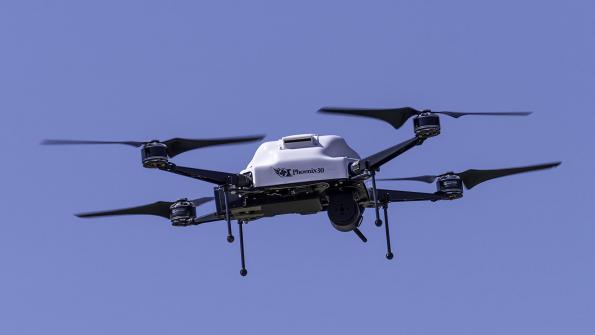Lawyer: Here’s what’s important for local governments planning to acquire drones
More and more local governments are using drones to perform tasks, says Tom Gemmell. He is a shareholder at national law firm Polsinelli and an expert on law and policy relating to drone technology. “Drones have been proven to be safer, reduce costs and increase productivity when compared to performing the same tasks by traditional manned aircraft or ground-based methods,” Gemmell (photo to the right) tells GPN. 
Gemmell tells GPN that cities and county need to identify those areas of its operations that may be more effectively and/or efficiently performed using drones when compared to performing the same tasks by traditional manned aircraft or ground-based methods. “A simple audit of a department’s or agency’s tasking and procedures can quickly reveal opportunities for drone applications,” Gemmell says.
The drone is simply a tool to get a camera or sensor to a location where information can be gathered, Gemmell explains. “Therefore, a lower-cost drone with a sophisticated camera might be just as good, and perhaps more cost effective, than a higher priced drone using a lower quality camera. This is especially true when the purchase of multiple drones is being considered.” The attorney says the number and types of aircraft and sensor suites, or combinations thereof, are almost endless. He urges municipalities and counties to conduct a thorough investigation upfront before moving forward with a particular drone purchase.
Gemmell lists (below) a few potential municipal applications for drones:
▪ Law Enforcement– Law enforcement can use drones to monitor crowds and assist with crowd control, protect venues, monitor emergent situations, track evading vehicles, and collect data to assist with investigations and prosecution of crimes (though many state and local laws prohibit the use of drones for such data collection without a criminal warrant.)
▪ Firefighting– Firefighters can use drones to monitor fires, evaluate the soundness of structures, assess fire damage and progression, and provide real-time information to commanders so they can more safely and effectively direct assets to areas of need.
▪ Search and Rescue– Search and rescue personnel can quickly deploy drones when and where needed to assist with a local government’s search and rescue operations, for example using thermal imaging cameras to find missing children or nursing home patients at night, to locate persons and identify areas of priority need after natural disasters, and to deliver communications equipment, medicine or resources to hard-to-reach locations.
▪ Building Departments– A city’s building department can use drones to evaluate construction sites, identify water drainage patterns, create point clouds for 3-D/virtual modeling of the buildings, and to monitor the progress of construction. 
▪ Transportation– Transportation departments can use drones to inspect roads, bridges, tunnels, commuter rail lines, shipping facilities, runways and other critical infrastructure for needed repairs or replacement, and to monitor construction sites and progress.
▪ Highway departments– Staffers in highway departments can use drones to monitor traffic patterns, identify areas in need of repair, and assist with the planning of roadway work sites. Drones can also be used to inspect salt stockpiles and vehicle yards to assist with the department’s advance planning and budgeting efforts.
▪ Forestry– A city’s forestry department can use drones to determine the health of the city’s trees, identify and combat infestations, and provide canopy counts to assist in the development and planning of parks and urban plantings with diverse and healthy populations.
▪ Parks and Recreation– A city’s parks and recreation department can use drones to assist with the planning and monitoring of festivals and sporting events, and even provide safer, more dramatic and less costly fireworks displays through the use of autonomous, swarming drones (e.g. Intel 500 display using “shooting star” drones).
_____________
To get connected and stay up-to-date with similar content from American City & County:
Like us on Facebook
Follow us on Twitter
Watch us on Youtube




















